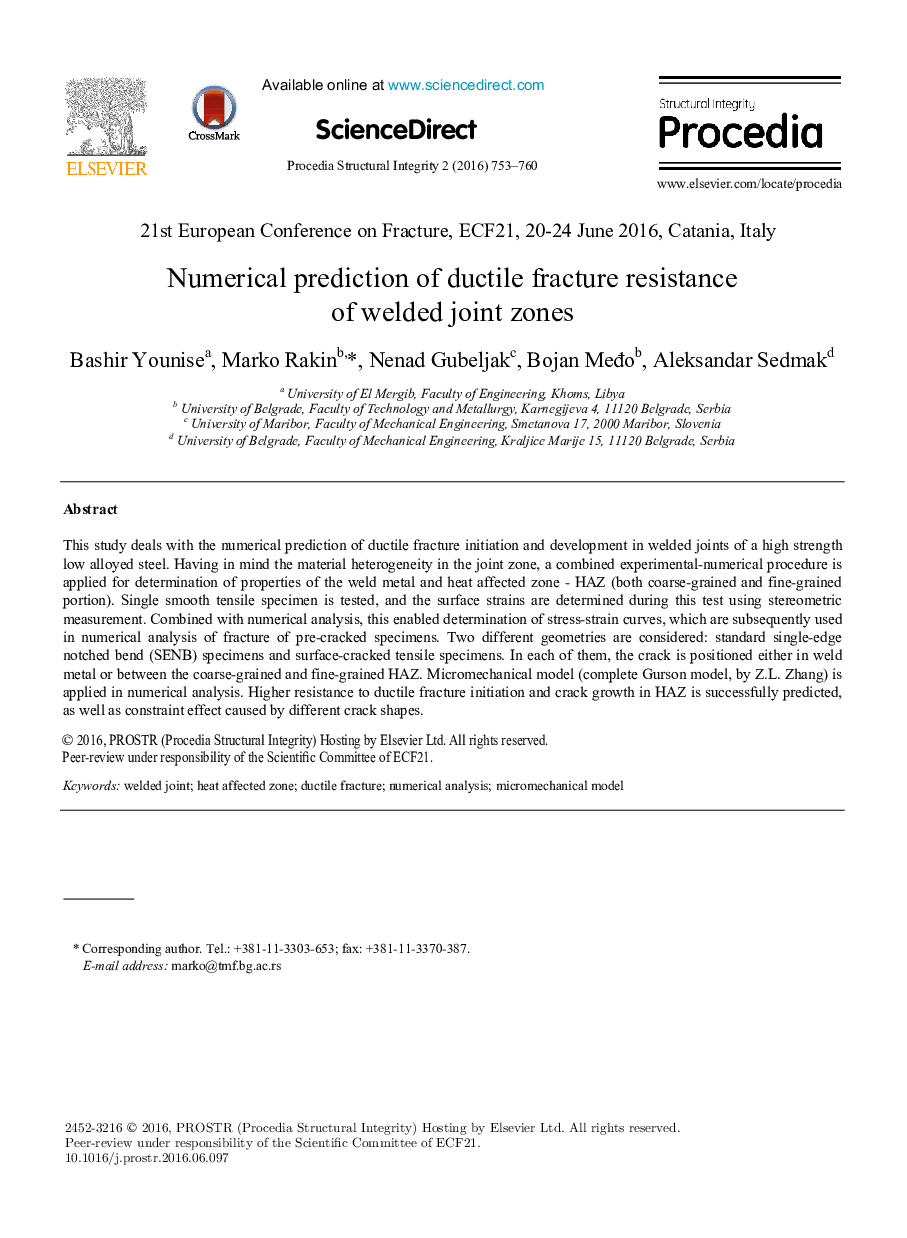| Article ID | Journal | Published Year | Pages | File Type |
|---|---|---|---|---|
| 1558738 | Procedia Structural Integrity | 2016 | 8 Pages |
This study deals with the numerical prediction of ductile fracture initiation and development in welded joints of a high strength low alloyed steel. Having in mind the material heterogeneity in the joint zone, a combined experimental-numerical procedure is applied for determination of properties of the weld metal and heat affected zone - HAZ (both coarse-grained and fine-grained portion). Single smooth tensile specimen is tested, and the surface strains are determined during this test using stereometric measurement. Combined with numerical analysis, this enabled determination of stress-strain curves, which are subsequently used in numerical analysis of fracture of pre-cracked specimens. Two different geometries are considered: standard single-edge notched bend (SENB) specimens and surface-cracked tensile specimens. In each of them, the crack is positioned either in weld metal or between the coarse-grained and fine-grained HAZ. Micromechanical model (complete Gurson model, by Z.L. Zhang) is applied in numerical analysis. Higher resistance to ductile fracture initiation and crack growth in HAZ is successfully predicted, as well as constraint effect caused by different crack shapes.
